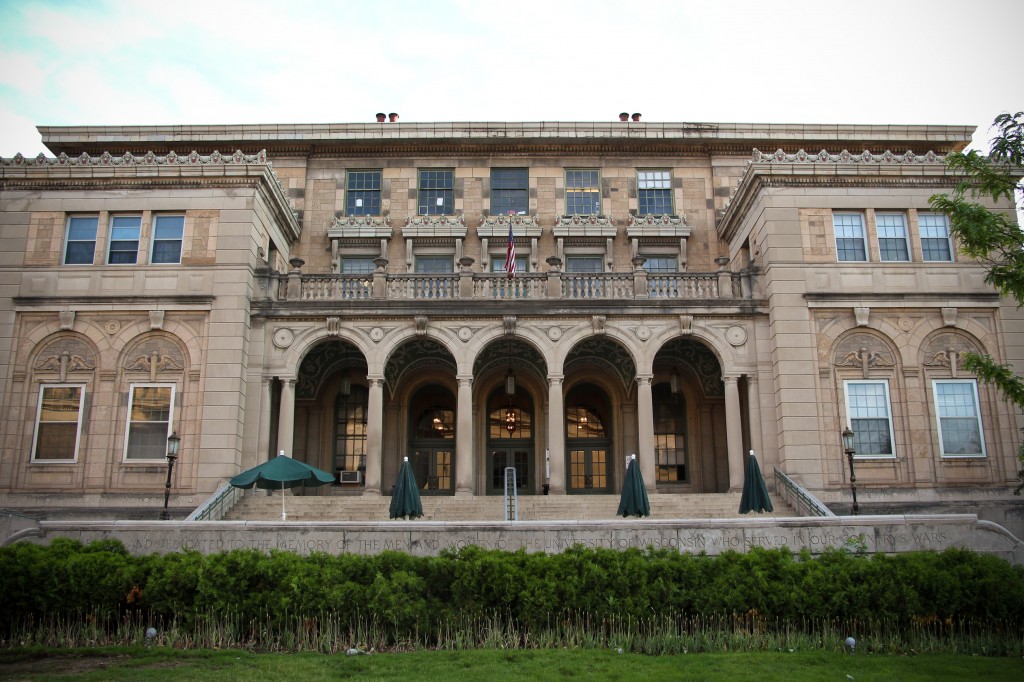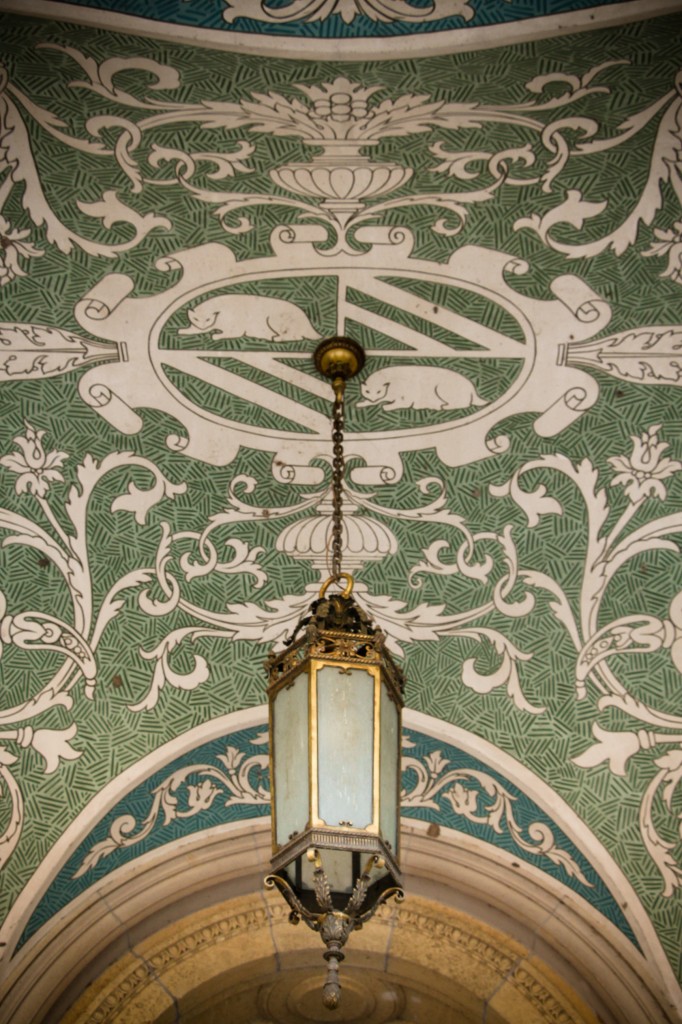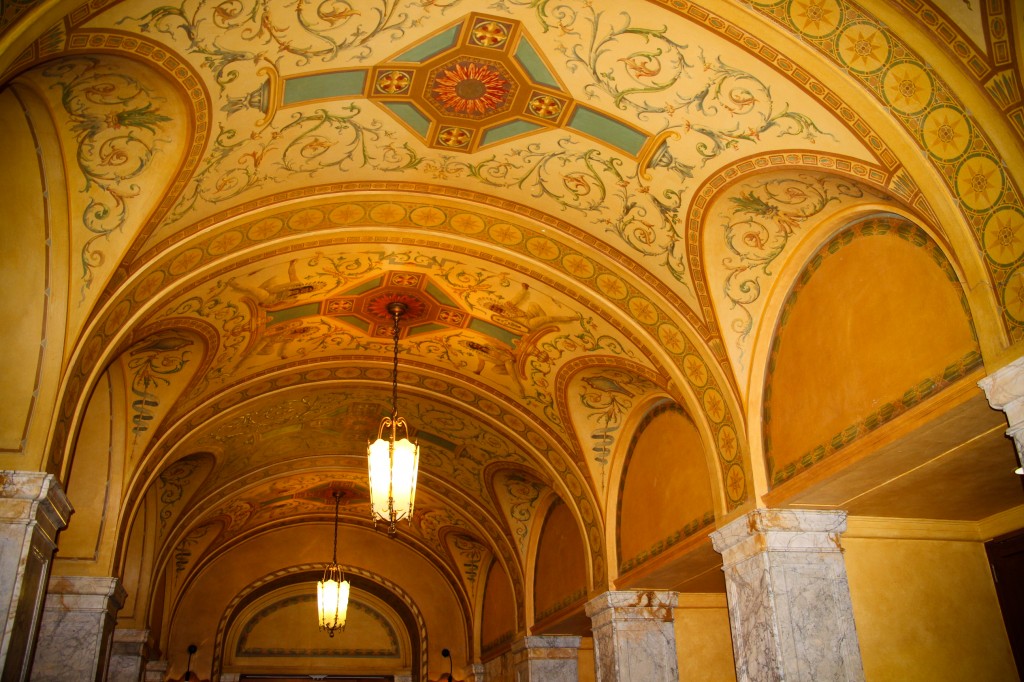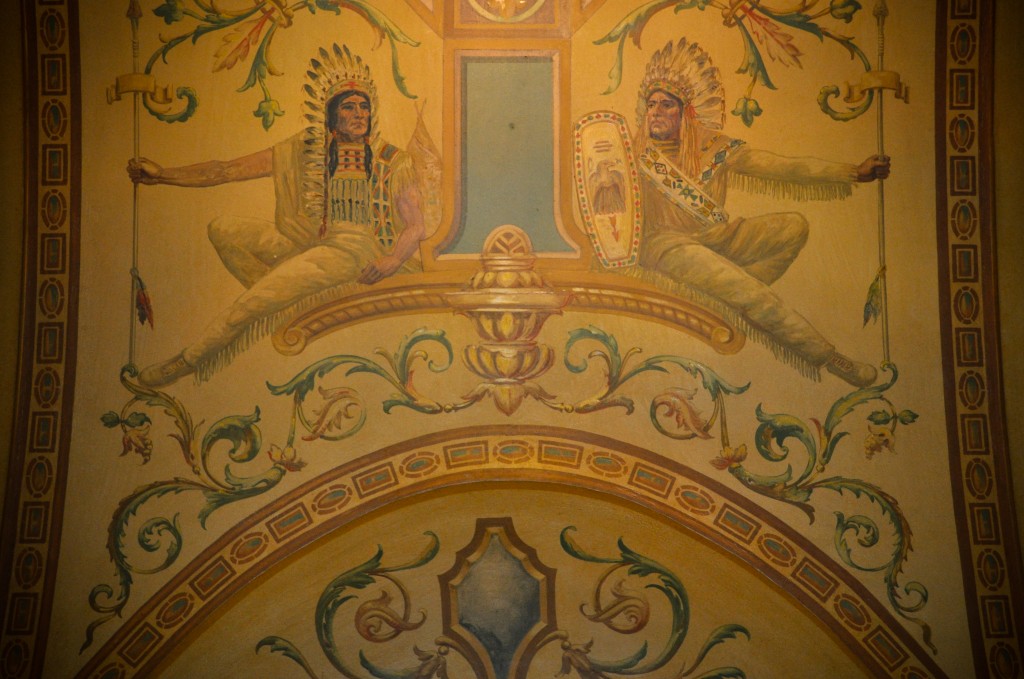A historical walking tour of the Memorial Union main entrance
By Jake Heyka ’14
“Down the forest aisles of France. Hear the green-clad column singing! Noonday beems from rifles glance down the forest aisles of France. In these haunts of old romance how we set the echoes ringing! Down the forest aisles of France hear the green-clad column singing!”
–John Herbert Culnan ’21, from the pamphlet given out at the Memorial Union Cornerstone Ceremony
Between phase 1 of the Memorial Union Reinvestment, the food and drink to be had, and friends to be made on the Terrace, it’s easy to forget the original purpose of Memorial Union. But the Memorial Union is just that – a memorial union – dedicated to the lives of those University of Wisconsin men and women who served in our country’s wars. In fact, written on the front of the building are the words “dedicated to the men and women of the University of Wisconsin who served in our country’s wars.” Ted Crabb, Director Emeritus of the Wisconsin Union, noted that “the writing outside sets the stage for what you experience as you walk through [the building].”
Main Entrance
Many of us find ourselves entering Memorial Union on the first floor, stopping in for few scoops of our beloved Babcock ice cream and buzzing right out to the Terrace.
In actuality, the main entrance of Memorial Union is the middle entrance of the building set atop two flights of stairs. Back in the 1920s, we Badgers did not access the entrance by the ice cream shop. That entrance was originally a service entrance with a much smaller door, and it only became a focus of the Union after the 1970s.
This main entrance was created with special consideration for its aesthetics as well as a deeper meaning and purpose. From a quick glance, the building is a definite accomplishment by its designer, Arthur Peabody, to exemplify an Italian Renaissance style. The deeper meaning is that of a memorial to Badgers who were also service men and women. Last, the Union was to be the “living room” of the university. The interior designers took special consideration of these multiple functions.
Walking up the stairs, details of the Italian Renaissance style come into view. Looking up, the first artistic element you will notice is the fresco on the ceiling just outside the outer doors. It mimics an Italian sgraffito design, but above the center doors is a unique element: a shield crest with two badgers at the center. Like the rest of the Union, this crest was developed with special consideration to the tribute-nature of the structure.
It’s important to note that each door has a unique symbol on its handle: a shield with a peace pipe behind it. Placing the symbol on the doors was meant to showcase how the Union is known for bringing people together in camaraderie from all corners of the earth.
Memorial Hall
Once you enter the building, you are in Memorial Hall. Flanking the entrance is the continuation of the tribute theme. Four walnut tablets hang from the walls near the left and right exits of the hallway. The names of the 219 Gold Star soldiers engraved into them were originally to be cast in bronze, adding to the extravagance of the interior design. As we now see, though, that vision for bronze tablets was not realized. The cost was too exorbitant to have bronze tablets and thus the names are on sand blasted walnut.
The hall pillars are made of marble to add to the sophisticated aura of the floor. This continues throughout the structure, especially into Main Lounge just ahead. The intent was to have two large Italian chairs against the pillars as well as two books with names of former UW Madison service men and women and one of Union members, though the plan was eventually abandoned.
Looking closer at the ceiling, you’ll see a hand-painted motif depicting Native American soldiers. This artwork was created in honor of the belief that Native Americans were the first soldiers who defended Wisconsin. The artists, interior design student Rachel Baird and Union interior designer Léon Pescheret, took what they considered to be “special consideration” for the accuracy of their “idealized” Native Americans in the motif. Both Baird and Pescheret researched and carefully chose symbols from Native American tribes around the United States before deciding on the current painting.
In actuality, however, the accuracy is askew to what local Native American tribes find to be reality. This has been a source of some contention in recent years though no one has taken strong action in opposition to the motif’s existence.
Main Lounge
A few steps away is the center of the Union, the Main Lounge. Like Memorial Hall and the outside steps, the extravagance extends into this area. Italian marble pillars anchor the room and are decorated with sienna silver, giving it a formal feel. The room originally was intended to be the primary space in the Union where people would meet, gather, and converse. Accordingly, fireplaces are set on either side of the room and Pescheret custom furniture is grouped around the room to facilitate the space’s use for fostering camaraderie. A radio was placed in the room, though, yielding a disturbance to the serenity of this space every time the Badgers scored a touchdown (not that anyone would be against such a disruption).
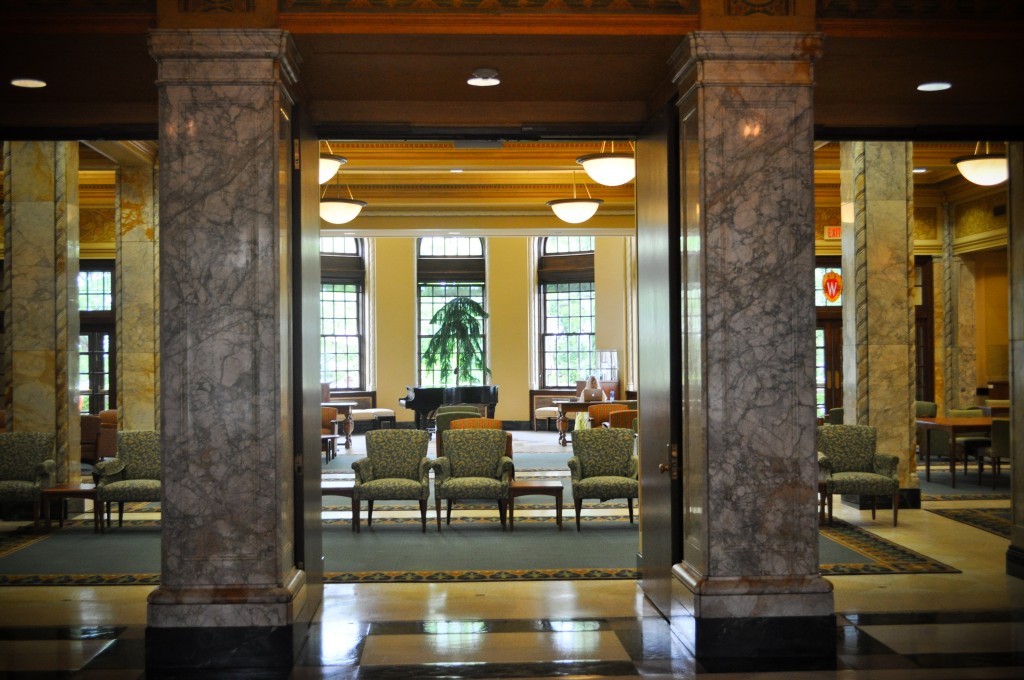
The ceiling differs greatly from that of Memorial Hall. Here we see a frieze design of the five native flowers of Wisconsin mixed and coordinated through the expanse of the room. This room’s design is a tribute to the ecological diversity of our state. A plan existed to have a large portrait of Bishop Fallows in this room from CJ Mar, but the plan was not realized for reasons unknown.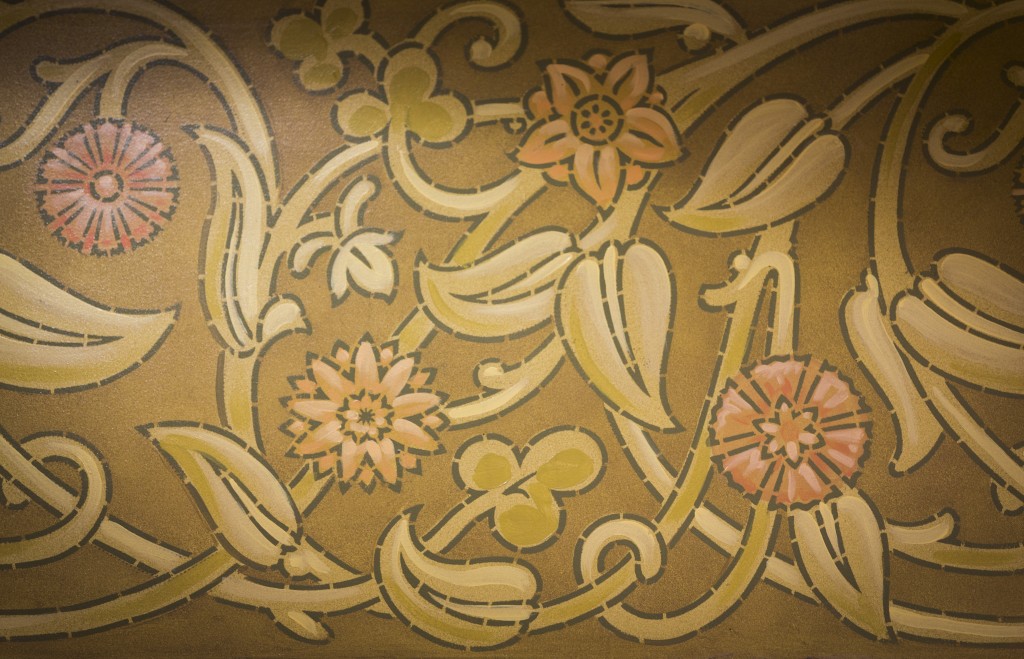
Walking onwards is a piano often played by students and community members, as well as a clock just to the right. This clock was a dedication to the Union by the class of 1929, just as the Union opened. The class of 1928 donated tapestries for this room in the half circle area near the clock.
Looking back on his many years walking through these halls, Ted notes “in its way, it is a very sacred place.” The Memorial Union entrance is just one of the many spaces inside this iconic building that bears a rich history.
Jake Heyka is a senior at UW-Madison. He is finishing his degree with honors in the liberal arts, majoring in international studies and political science with a certificate in African studies. He is also involved with the Union as the director of WUD Alternative Breaks. His favorite place in the Union, not coincidentally, is the stairway entrance on the Langdon Street side.

